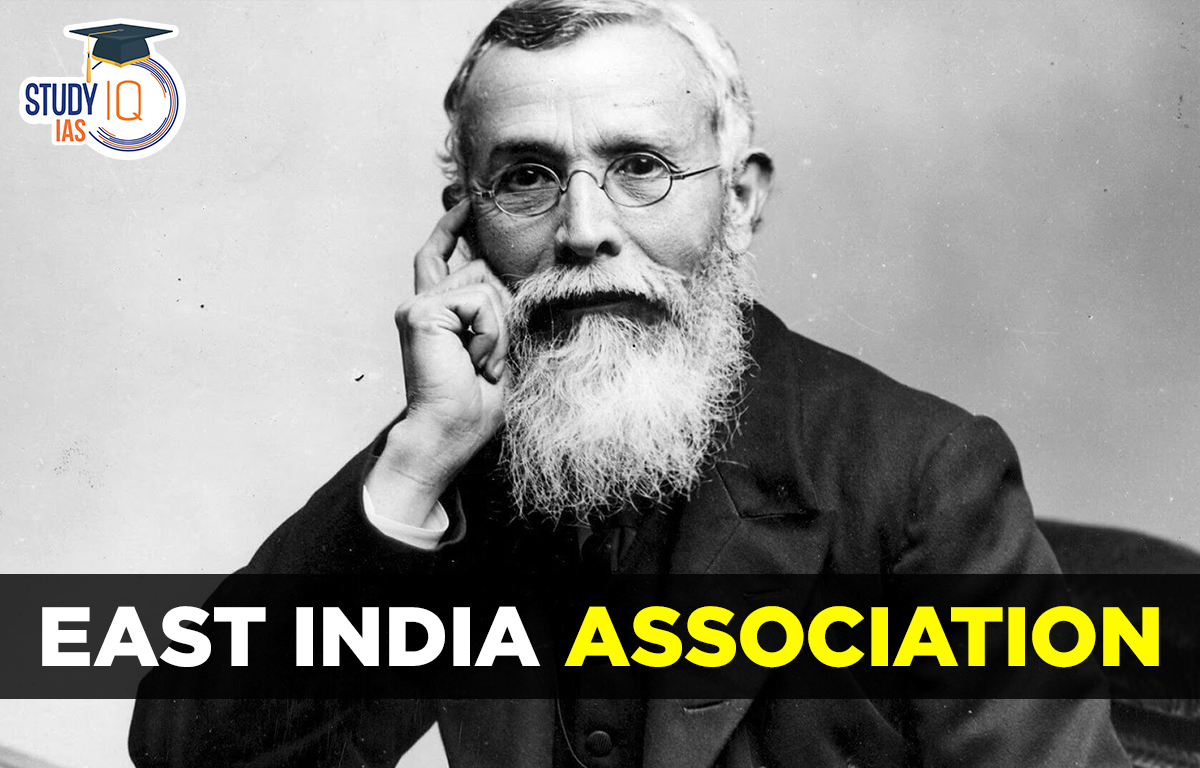Table of Contents
East India Association
East India Association was founded in the year 1866 in London by Dadabhai Naoroji. In 1869, it opened branches in several Indian towns, including Bombay, Kolkata, and Madras. The association’s primary objectives were to increase British awareness of the conditions in India and to mobilise public support for Indian welfare. This group is also referred to as the Indian National Congress forerunner. The numerous facets of the East India Association that are significant for candidates getting ready for the UPSC exam will be highlighted in this article.
| Note |
| Dadabhai Naoroji, often referred to as the “Grand Old Man of India,” used this organization to further his efforts in advocating for self-rule and justice for India under British governance. |
East India Association History
The East India Union replaced the London Indian Society as of October 1, 1866. The East India Association was established to concentrate on the issues and problems relating to India and to persuade the British authorities to consider the country’s development seriously. This group promoted advancing the general public’s interests and Indian well-being.
It attempted to give the British public a true image of India and voice Indian concerns in the British media. In 1866, the Ethnological Society of London made an effort to demonstrate that Asians were lower to Europeans. The efforts of the East India Association also sought to refute this idea.
East India Association Objective
The association’s goal was to present British society with Indian views. The group was able to exert some sway over the British Parliament thanks to the support of numerous well-known Englishmen. It was the first group with participants from various Indian regions.
Significance of East India Association in London
The East Indian Association succeeded the London Indian Society, which took Dadabhai Naoroji as its model. Lord Lyveden was elected as the company’s first CEO. Around 1000 people were initially a part of the organization, but female members weren’t permitted to join until 1912.
Through two journals, the Asiatic Quarterly Review and the Journal of East India Association, it promoted its views on India to the British audience. The Asiatic Quarterly Review, which replaced the Journal of the East India Association, published several papers and proceedings from the organization. The East India Association engaged a variety of audiences, for example, by hosting lectures from Indian and British men and women on a range of topics, from the economic growth of Indian literature to suffrage.
The association served as a forum to discuss India’s economic, political, and social issues. It addressed topics like self-governance, fair taxation, and equitable trade policies.
In 1949, this association changed its name to the British, India, and Pakistan Association after incorporating the National Indian Association into its purview. In order to create the Royal Society for India, Pakistan, and Ceylon in 1966, it merged with the former India Society, now known as the Royal India, Pakistan, and Ceylon Society.
East India Association Legacy
This group established offices in Bombay, Kolkata, and Madras in 1869. It was inactive until the 1880s, but during those years, it had the most Indian citizens from across the subcontinent. The four college students who founded the East India Association and the London Indian Society subsequently served as presidents of the Indian National Congress.
East India Association UPSC
Dadabhai Naroji founded the East India Association to educate the British public about their duties as the country’s masters. As a result, the majority of the organization’s efforts were focused on eradicating that enormous ignorance of India. By giving the British people the truth about India, it hoped to advance the welfare of Indians and the general public.
| Related Articles | |
| Education System in British India | British Administration System |
| Poona Sarvajanik Sabha | Deccan Riots |
| Madras Mahajan Sabha | Civil Service under British Administration |


 Jallianwala Bagh Massacre, Date, History...
Jallianwala Bagh Massacre, Date, History...
 Important Lakes of India, State wise and...
Important Lakes of India, State wise and...
 Buddhism History, Origin, Sect, Councils...
Buddhism History, Origin, Sect, Councils...





















